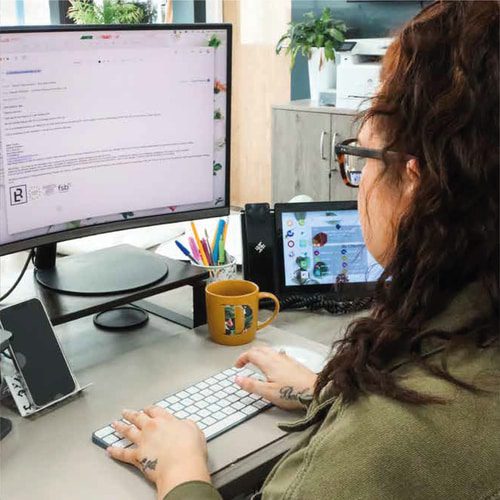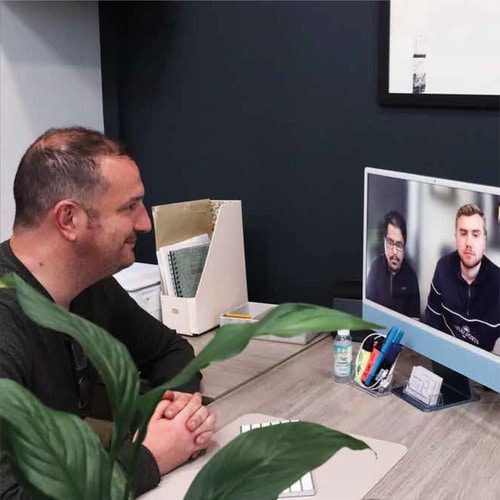Web Design & SEO: What You Need To Know
At Blue Whale Media, our main service by demand is website design in Stockport and website development. However, the vast majority of our clients, as well as many other business owners do not focus on the behind-the-scenes details of what a website can do, and should be doing, for their business. In this blog, I will explain why search engine optimisation is an important factor and why every designer should know how SEO and Web Design fits hand-in-hand.
Domain Names
In the past, domain names littered with important keywords were a popular choice for SEO. Today, this simply doesn’t work and looks very spammy both to search engines and users. From the perspective of business owner, SEO and web designer, it’s important to ensure your domain name is memorable for users and easy to spell, pronounce and type.
Website Hosting
Choosing the right hosting provider is an important part of setting up your website as this is what will ultimately control your website speed, which is a direct ranking factor for search engines such as Google. It will also control your down-time and up-time, which is a reference for how your website remains online. A good hosting provider will be able to keep your website online with minimum down-time, including website and server maintenance.
Choosing The Right CMS
Business owners should carefully disect and find a reliable content management system to use for their website. There are plenty of choices out there, however the dominant CMS choice by popularity is WordPress. Each CMS brings its own set of specialised tools to the table and you should decide by what you want from your website. For example, Magento and Shopify are great choices for premium eCommerce websites, but expect the premium price to go with it. WordPress is the most recommended as it is an all-rounder CMS, for eCommerce websites it can offer an extension called WooCommerce which turns your basic business website into an online shopping store with features such as stock management, sales, discounts, coupons, checkout systems and more. You can learn more about the different types of CMS for web design on our blog.
Optimising Your Website
Actually optimising the website for search engine performance is the many small details that website designers often overlook. This includes things such as an optimised SEO title, a meta description, setting alt tags on images, internal linking pages and blogs, etc.
SEO Title
The SEO title is the title of the page which shows up on search engine result pages. For example, whenever you enter a search query in Google, you are greeted with a set number of results. The SEO title is used as the heading. SEO titles are used as a direct ranking factor by search engines, which is why the main keyword of a page will commonly be the first thing you read in an SEO title.
Meta Description
The meta description is a short description, usually between 140-180 characters, which shows just beneath the SEO title. The meta description is not used as a direct ranking factor, but this doesn’t stop many people from inserting their keywords into it. It is however, a proven method of increasing your click through rate – and the CTR of a website/page is indeed a direct ranking factor for search engines, which is why it is important for a meta description to be properly optimised to have the highest possible CTR.
Alt Tags
Image alt tags are used to describe what an image is showing to search engine crawlers. Since crawlers and spiders are designed to read the pure code and HTML of a website, they do not have the ability to actually see what an image is displaying. In SEO, it is common to optimise the alt tags and file-names of images to describe the images to these robots – and there’s usually a keyword insertion in either the alt tag or file name, or sometimes both.
Internal Linking
Internal linking refers to linking from one page to another, with both pages on the same website. Internal linking helps to pass relevancy and link juice around your website, but it is also an important method to show to search engine crawlers which page is more important. For instance, you can see on our own website we have many blogs about web design, and we have a web design service page. We ensure our blogs always link back to our web design service pages in order to show search engines that the service page is much more important than the blogs – and as such, search engines are far more likely to show our service page in search results than our blogs.
URL
The URL of a page and general URL structure of a website as a whole are also important areas to keep in mind designing a website. An easy way to explain this is to think of a blogging website with multiple different categories, sections etc. Which URL is better in our example blogging website?
- www.blog.com/sport/football/mo-salah-does-something/
- www.blog.com/20032020/140141/mo-salah-did-a-thing-in-this-country-on-this-day-wow/
The first URL would be far better. This is because it provides far better context and relevancy around the content of the page for both the user and for search engines. Another thing to keep note of is the length of a URL, it’s been proven through case studies that both users and search engines prefer shorter URLs than massive long ones. A common method used to keep URLs short but descriptive is to cut-out stop words. Stop words include things such as “the”, “and”, “a” etc. You can find a full list of stop words online.
Responsive Website Design
In 2020, the majority of search traffic is generated through a mobile device. Because of this, in the recent years gone by, Google and other search engines has put a massive focus on website being accessible for all types of mobile devices. An example of this focus is the mobile-first indexing update. It is common for websites to display different content and elements depending on a user’s device. To combat businesses displaying lower quality content for mobile users, Google has taken the step to index and rank the mobile-version of a website over the desktop-version. It is highly recommended, and is a basic requirement of website design in 2020, to design your website to be responsive and mobile-friendly. Even if you have a top-notch website for desktop performance, if you fail to cater to your mobile users, your website will hurt massively in the organic rankings.
Conclusion
So that’s a quick run-down of just some of the things a website designer should keep in mind when designing a website which can both look good and perform well in the search engines. At Blue Whale Media, all of our websites feature extensive on-page SEO in order to ensure our clients are able to be found online for their important keywords. Contact us today and see what we can do for you!




